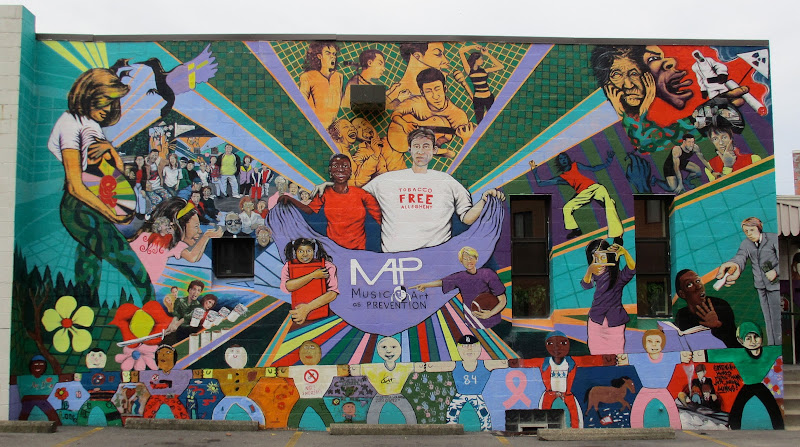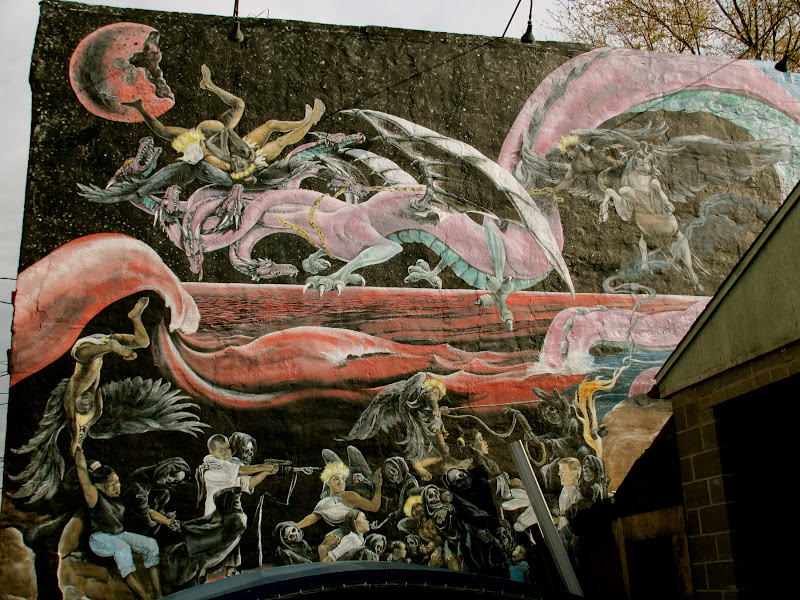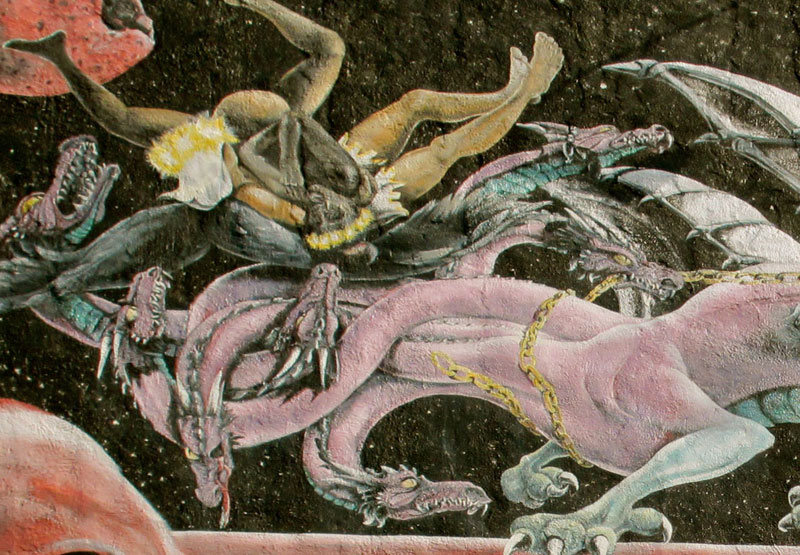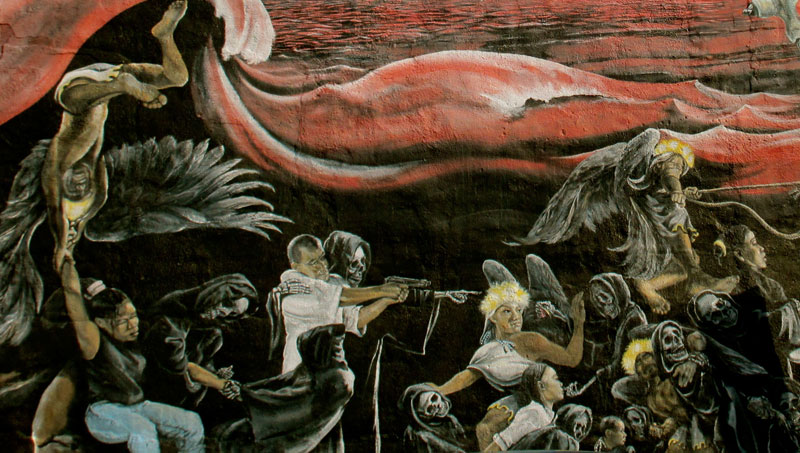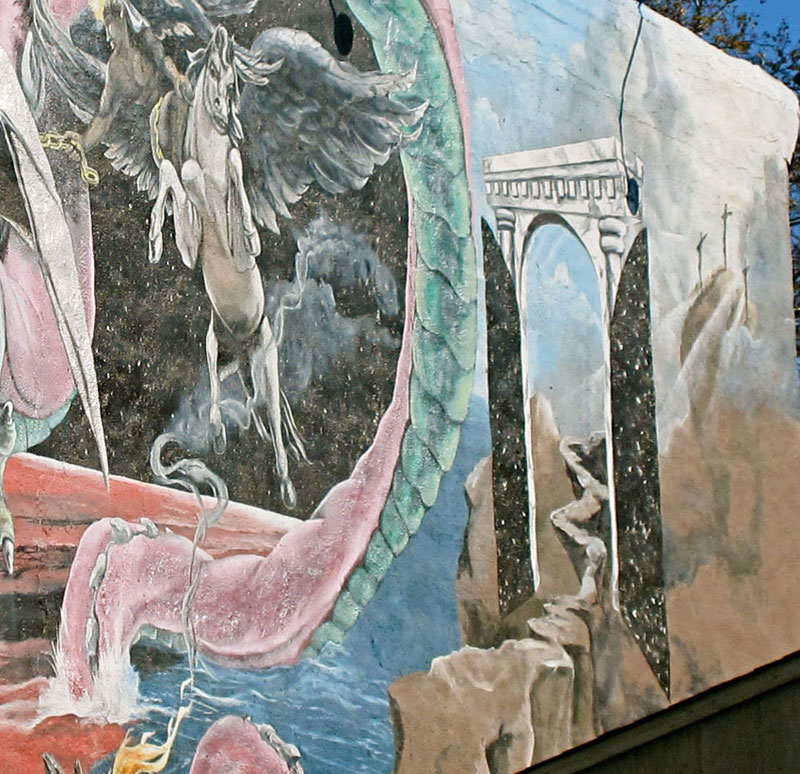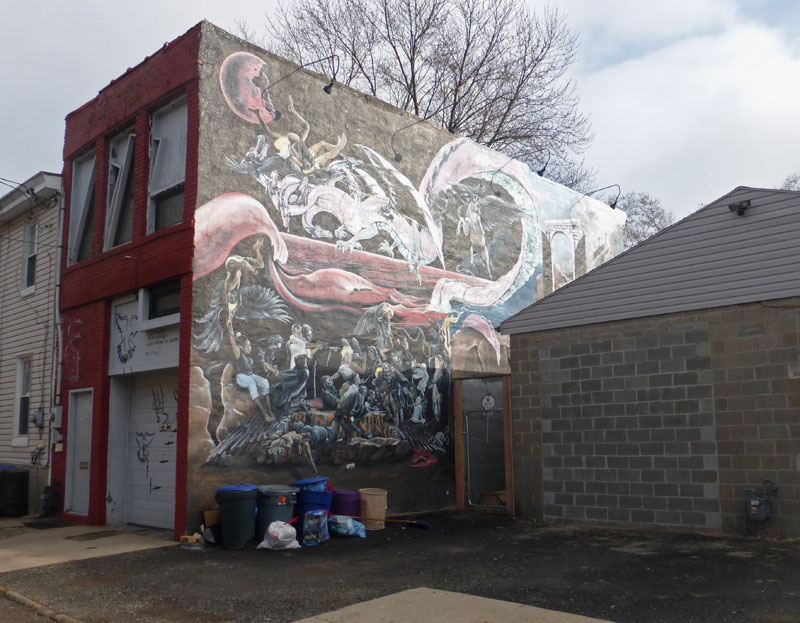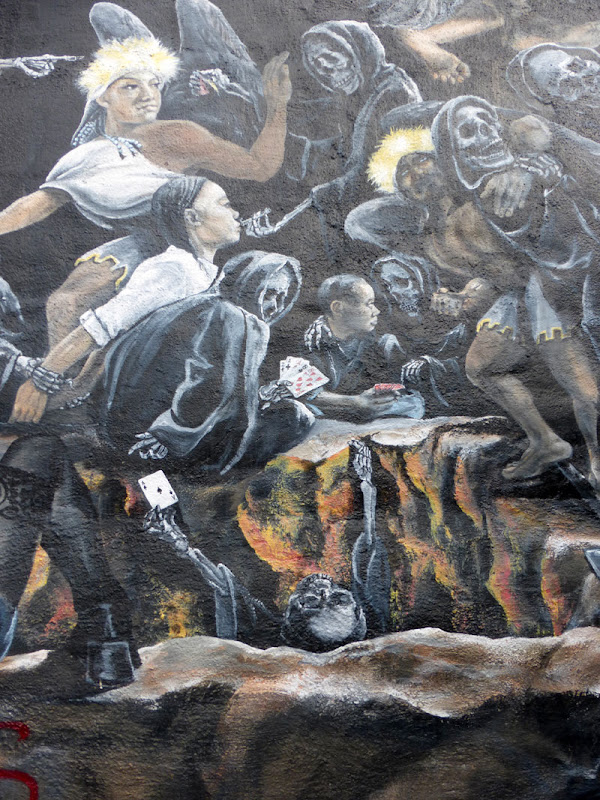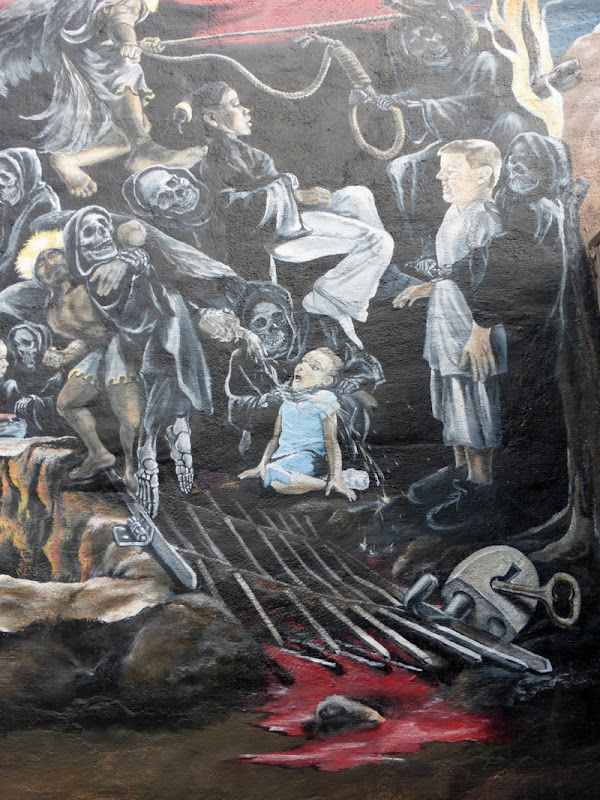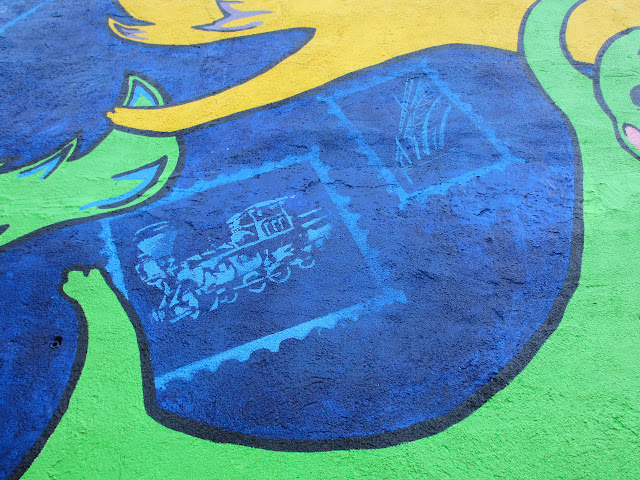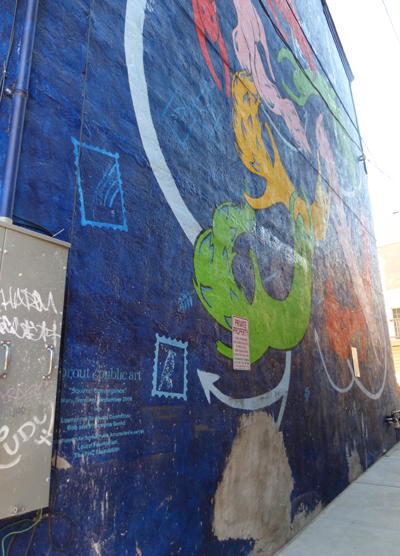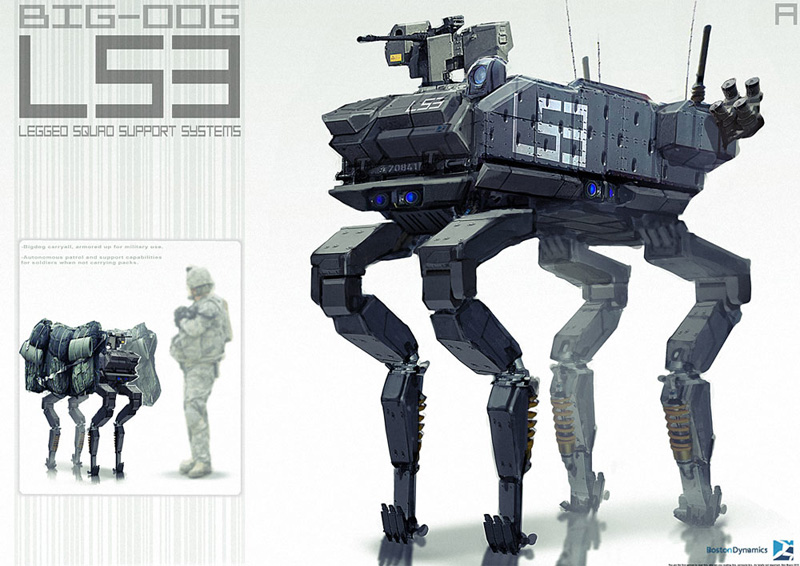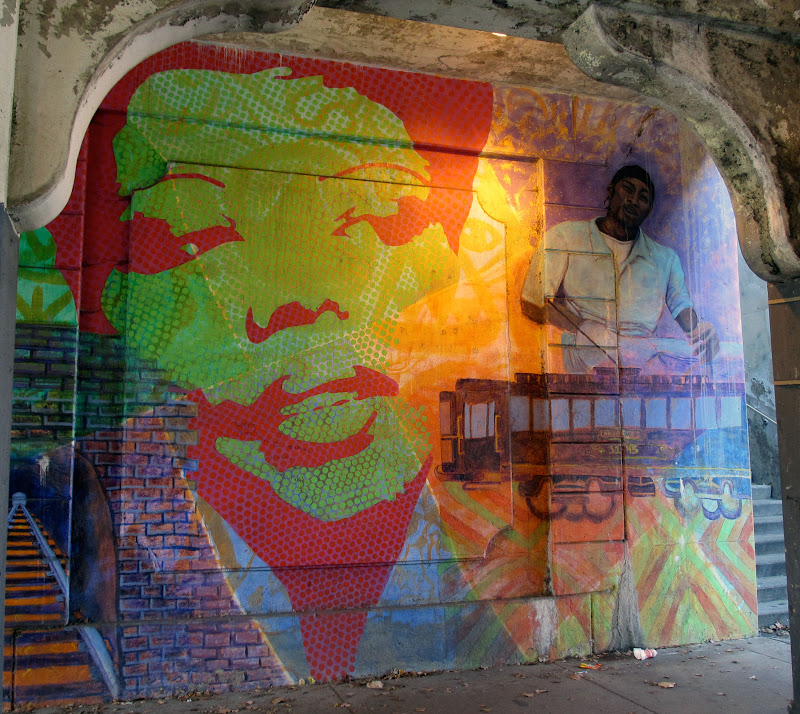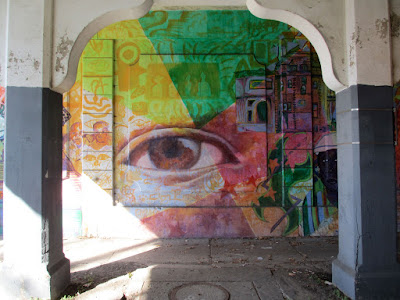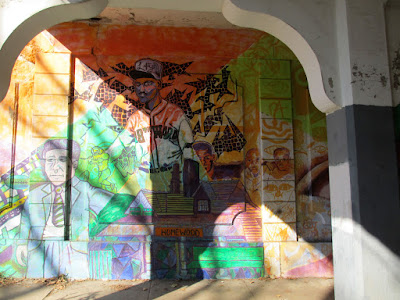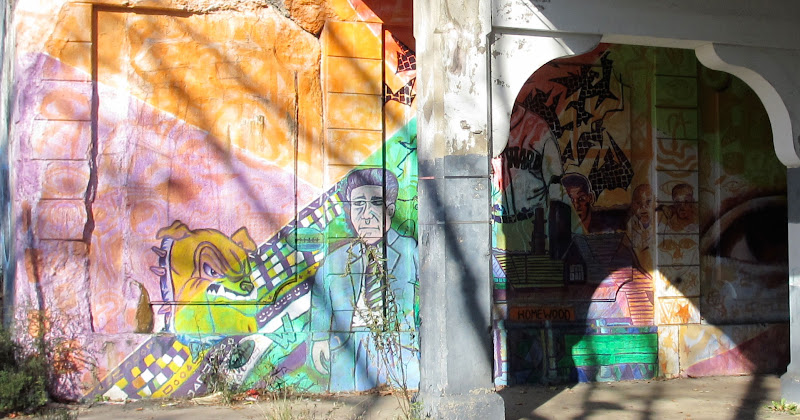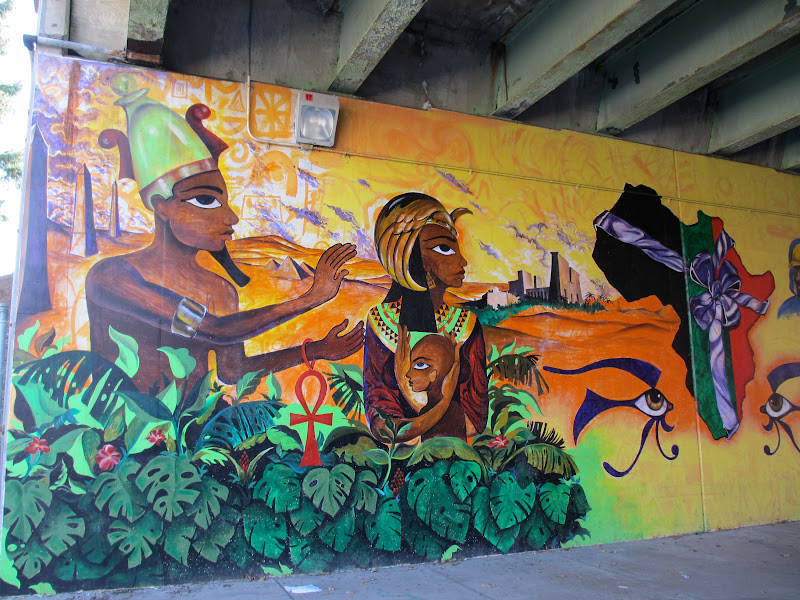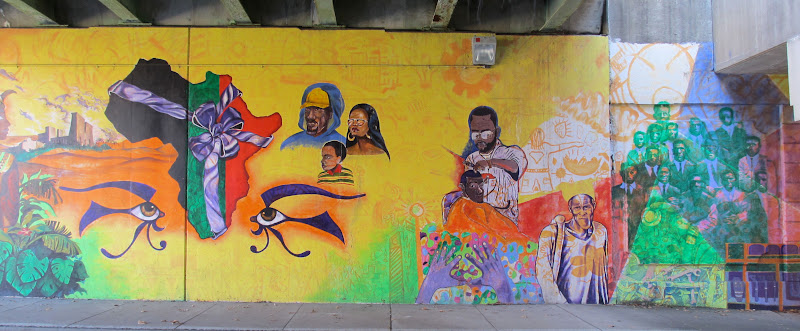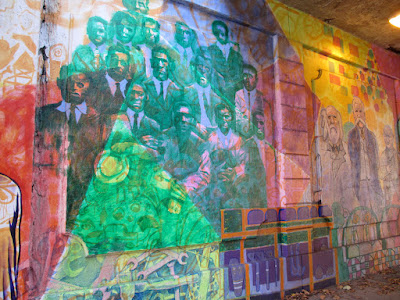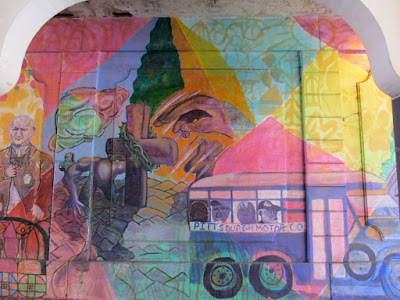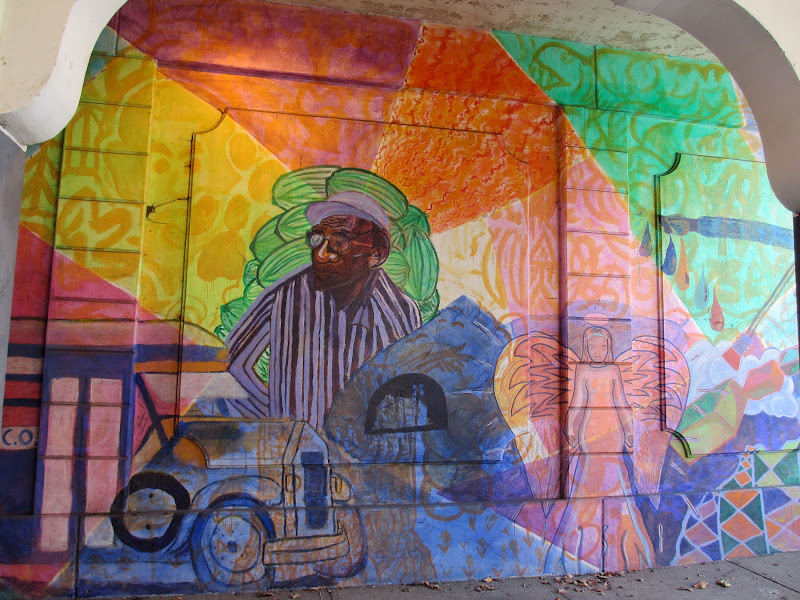About Pgh Murals
Spreadsheet of Pittsburgh Public Art and blog archives
Map of Pittsburgh Public Art

The name alone draws us in. Wheeling Heliocentric Orrery. What does that mean? From the New Oxford American Dictionary: an orrery (noun) is a mechanical model of the solar system, or of just the sun, earth, and moon, used to represent their relative positions and motions.
ORIGIN early 18th cent.: named after the fourth Earl of Orrery, for whom one was made
.
As we’ve mentioned before, we bike to these murals around Pittsburgh. Being cyclists our attention was drawn immediately to the very prominent figure of the red headed cyclist and we decided that the world is revolving around her. Because it’s all about us! We figured the artist wasn’t referring to Wheeling, West Virginia here, so he must be referring to the wheels on that bike. It all makes sense! Sort of. Turns out that we were partially right.
In 2004, Kevinn Fung created an image that depicts scenes from Lawrenceville as you travel through history. A human timeline from left to right. Using different phases of daylight to show the passage of time, it starts on the left side with images of the Native Americans that once called this place home.
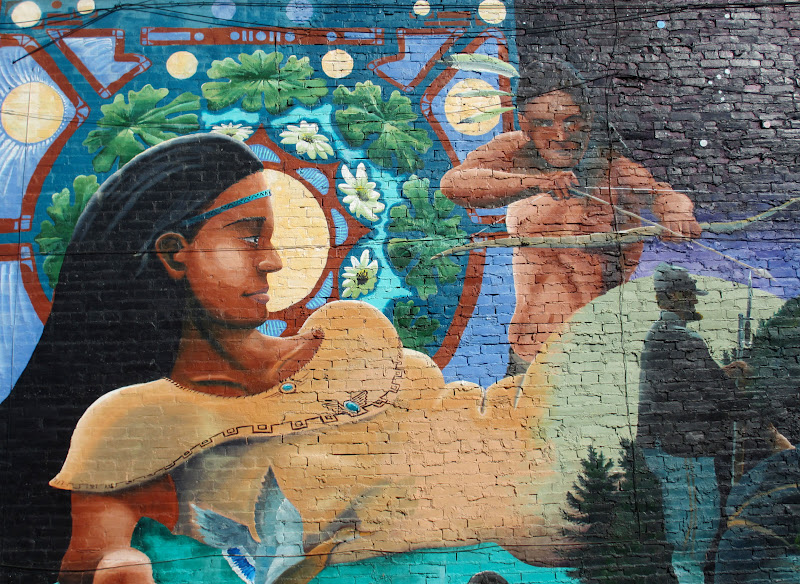
To the right of that you'll see the progression to civil war soldiers, victorian era ladies, and turn of the century miners.

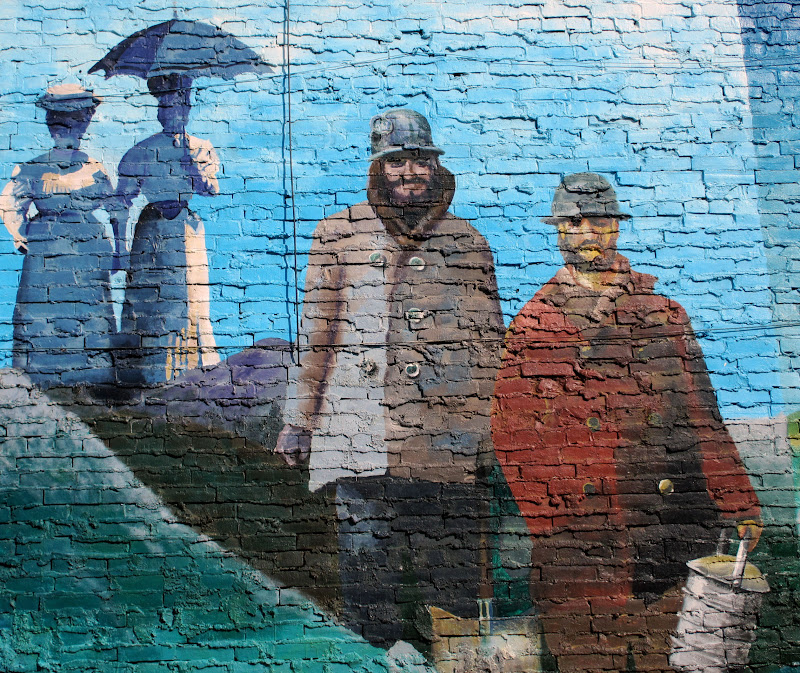
As the landscape continues to evolve, yet maintain it’s character of rolling hills, the image moves into present day recreation, art and multiculturalism. The reinvention of Lawrenceville as a place for artists, galleries and studios.


Kevinn Fung has used not only the changing levels of daylight and subtle transition of the geography to convey the march through time, but also a change in artistic style through the mural. From left to right he’s used simple and graphic images followed by natural/realistic portraits and finally more of a cartoon style for the modern scenes. What at first appears to be a fairly simple mural turns out to have many, many layers in it. This is not a drive by
mural. This is one that you need to stop and really look at to fully appreciate everything that's going on in it.
When you do stop and really look you’ll also notice how well the mural works with it’s location. From the start there were a couple of significant obstacles with the location. Not only is it a long wall with a parking lot right in front of it, but there’s a tall lamp post in the way and a brick fence post that butts up against the wall at the right side. Instead of ignoring these problems, Kevinn chose to work with them. The lamp post ends up looking like it’s supposed to be there. It’s a part of the street scene that the cyclist is riding past. The brick post became a place for the girl on the far right to sit. At first you don't even notice that the brick isn’t a part of the mural, it’s integrated that well.
The far left of the wall initially wasn’t going to be used for the mural. When it was included Kevin realized that the street traffic would have a hard time seeing that end of it and chose to keep the design there limited to a simple graphic element representing a creation myth motif
.
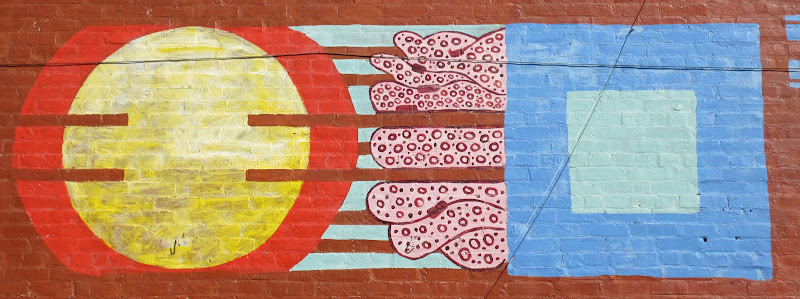
The first image – circular, yellow and ringed with orange – is for the sun. The second – protozoic life. The third image of a two–toned blue square is there to represent order out of chaos.
So, back to the name... It turns out that the cyclist here really is the center of the universe, but not for the reasons we were thinking. A fellow cyclist himself, Kevinn Fung just happens to have had an infatuation with red heads and liked to incorporate them into his works. When he first showed the design of the mural to friends they all kept asking him Who’s the redhead?
The Who
became WHO (Wheeling Heliocentric Orrery). Along with the self-portrait (the artist at an easel) the title is a personal connection to his creation that few would have known about if he hadn’t been willing to share that detail with us.
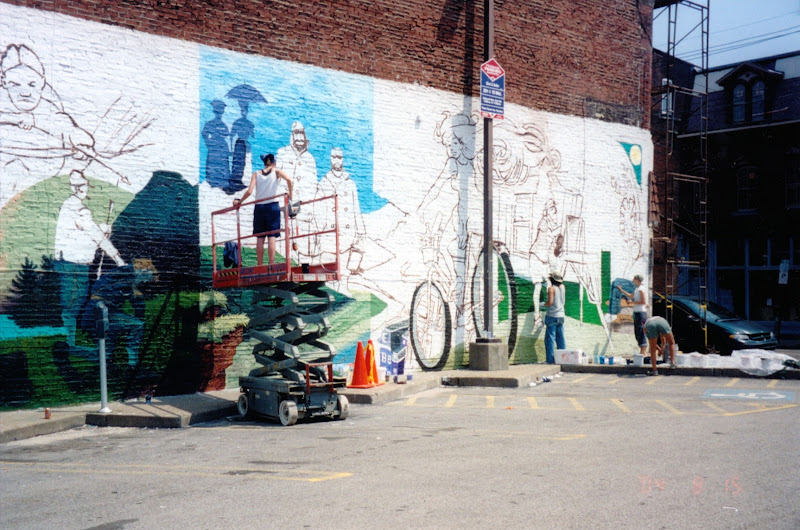
Kevinn provided a photo for us, taken while they were painting the mural.
Something else he’d like to share is his thanks to the artists who assisted him on this mural: Felicity Newell, Sara Stanek and Andrea Celani – for all their hard work and emotional support in the summer sun of July 2004.
